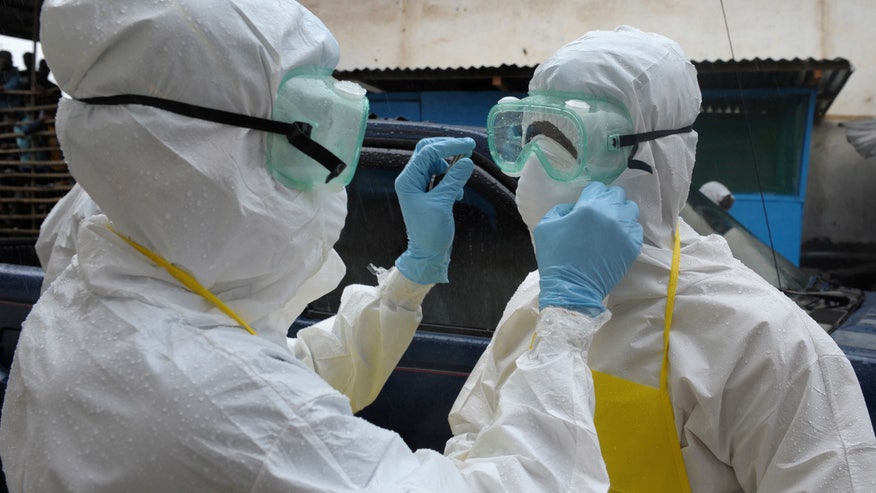
MINNEAPOLIS — THE Ebola epidemic in West Africa has the potential to alter history as much as any plague has ever done.
There have been more than 4,300 cases and 2,300 deaths over the past six months. Last week, the World Health Organization warned that, by early October, there may be thousands of new cases per week in Liberia,
Sierra Leone, Guinea and Nigeria. What is not getting said publicly,
despite briefings and discussions in the inner circles of the world’s
public health agencies, is that we are in totally uncharted waters and
that Mother Nature is the only force in charge of the crisis at this
time.
There are two possible future chapters to this story that should keep us up at night.
The
first possibility is that the Ebola virus spreads from West Africa to
megacities in other regions of the developing world. This outbreak is
very different from the 19 that have occurred in Africa over the past 40
years. It is much easier to control Ebola infections in isolated
villages. But there has been a 300 percent increase in Africa’s
population over the last four decades, much of it in large city slums.
What happens when an infected person yet to become ill travels by plane
to Lagos, Nairobi, Kinshasa or Mogadishu — or even Karachi, Jakarta,
Mexico City or Dhaka?
The
second possibility is one that virologists are loath to discuss openly
but are definitely considering in private: that an Ebola virus could
mutate to become transmissible through the air.
You can now get Ebola
only through direct contact with bodily fluids. But viruses like Ebola
are notoriously sloppy in replicating, meaning the virus entering one
person may be genetically different from the virus entering the next.
The current Ebola virus’s hyper-evolution is unprecedented; there has
been more human-to-human transmission in the past four months than most
likely occurred in the last 500 to 1,000 years. Each new infection
represents trillions of throws of the genetic dice.
If
certain mutations occurred, it would mean that just breathing would put
one at risk of contracting Ebola. Infections could spread quickly to
every part of the globe, as the H1N1 influenza virus did in 2009, after
its birth in Mexico.
Why
are public officials afraid to discuss this? They don’t want to be
accused of screaming “Fire!” in a crowded theater — as I’m sure some
will accuse me of doing. But the risk is real, and until we consider it,
the world will not be prepared to do what is necessary to end the
epidemic.
In
2012, a team of Canadian researchers proved that Ebola Zaire, the same
virus that is causing the West Africa outbreak, could be transmitted by
the respiratory route from pigs to monkeys, both of whose lungs are very
similar to those of humans. Richard Preston’s 1994 best seller “The Hot
Zone” chronicled a 1989 outbreak of a different strain, Ebola Reston
virus, among monkeys at a quarantine station near Washington. The virus
was transmitted through breathing, and the outbreak ended only when all
the monkeys were euthanized. We must consider that such transmissions
could happen between humans, if the virus mutates.
So what must we do that we are not doing?
First, we need someone to take over the position of “command and control.” The United Nations
is the only international organization that can direct the immense
amount of medical, public health and humanitarian aid that must come
from many different countries and nongovernmental groups to smother this
epidemic. Thus far it has played at best a collaborating role, and with
everyone in charge, no one is in charge.
A
Security Council resolution could give the United Nations total
responsibility for controlling the outbreak, while respecting West
African nations’ sovereignty as much as possible. The United Nations
could, for instance, secure aircraft and landing rights. Many private
airlines are refusing to fly into the affected countries, making it very
difficult to deploy critical supplies and personnel. The Group of 7
countries’ military air and ground support must be brought in to ensure
supply chains for medical and infection-control products, as well as
food and water for quarantined areas.
The
United Nations should provide whatever number of beds are needed; the
World Health Organization has recommended 1,500, but we may need
thousands more. It should also coordinate the recruitment and training
around the world of medical and nursing staff, in particular by bringing
in local residents who have survived Ebola, and are no longer at risk
of infection. Many countries are pledging medical resources, but
donations will not result in an effective treatment system if no single
group is responsible for coordinating them.
Finally,
we have to remember that Ebola isn’t West Africa’s only problem. Tens
of thousands die there each year from diseases like AIDS, malaria and
tuberculosis. Liberia, Sierra Leone and Guinea have among the highest
maternal mortality rates in the world. Because people are now too afraid
of contracting Ebola to go to the hospital, very few are getting basic
medical care. In addition, many health care workers have been infected
with Ebola, and more than 120 have died. Liberia has only 250 doctors
left, for a population of four million.
This
is about humanitarianism and self-interest. If we wait for vaccines and
new drugs to arrive to end the Ebola epidemic, instead of taking major
action now, we risk the disease’s reaching from West Africa to our own
backyards.



